
eBook - ePub
A Practical Guide to Alterations and Improvements
J. Buckland, Mrs B M Cooper, R. Cooper
This is a test
Buch teilen
- 168 Seiten
- English
- ePUB (handyfreundlich)
- Über iOS und Android verfügbar
eBook - ePub
A Practical Guide to Alterations and Improvements
J. Buckland, Mrs B M Cooper, R. Cooper
Angaben zum Buch
Buchvorschau
Inhaltsverzeichnis
Quellenangaben
Über dieses Buch
A practical guide which enables small builders to tackle everyday alteration and improvement projects with confidence.
Häufig gestellte Fragen
Wie kann ich mein Abo kündigen?
Gehe einfach zum Kontobereich in den Einstellungen und klicke auf „Abo kündigen“ – ganz einfach. Nachdem du gekündigt hast, bleibt deine Mitgliedschaft für den verbleibenden Abozeitraum, den du bereits bezahlt hast, aktiv. Mehr Informationen hier.
(Wie) Kann ich Bücher herunterladen?
Derzeit stehen all unsere auf Mobilgeräte reagierenden ePub-Bücher zum Download über die App zur Verfügung. Die meisten unserer PDFs stehen ebenfalls zum Download bereit; wir arbeiten daran, auch die übrigen PDFs zum Download anzubieten, bei denen dies aktuell noch nicht möglich ist. Weitere Informationen hier.
Welcher Unterschied besteht bei den Preisen zwischen den Aboplänen?
Mit beiden Aboplänen erhältst du vollen Zugang zur Bibliothek und allen Funktionen von Perlego. Die einzigen Unterschiede bestehen im Preis und dem Abozeitraum: Mit dem Jahresabo sparst du auf 12 Monate gerechnet im Vergleich zum Monatsabo rund 30 %.
Was ist Perlego?
Wir sind ein Online-Abodienst für Lehrbücher, bei dem du für weniger als den Preis eines einzelnen Buches pro Monat Zugang zu einer ganzen Online-Bibliothek erhältst. Mit über 1 Million Büchern zu über 1.000 verschiedenen Themen haben wir bestimmt alles, was du brauchst! Weitere Informationen hier.
Unterstützt Perlego Text-zu-Sprache?
Achte auf das Symbol zum Vorlesen in deinem nächsten Buch, um zu sehen, ob du es dir auch anhören kannst. Bei diesem Tool wird dir Text laut vorgelesen, wobei der Text beim Vorlesen auch grafisch hervorgehoben wird. Du kannst das Vorlesen jederzeit anhalten, beschleunigen und verlangsamen. Weitere Informationen hier.
Ist A Practical Guide to Alterations and Improvements als Online-PDF/ePub verfügbar?
Ja, du hast Zugang zu A Practical Guide to Alterations and Improvements von J. Buckland, Mrs B M Cooper, R. Cooper im PDF- und/oder ePub-Format sowie zu anderen beliebten Büchern aus Architecture & Architecture General. Aus unserem Katalog stehen dir über 1 Million Bücher zur Verfügung.
Information
Project 1
Double hung sash windows
The majority of house owners are inclined to indiscrimately replace these very practical and attractive windows with their modern day counterparts of aluminium or standard mass produced side hung casements. This is usually thought to be a cheaper and more efficient form of replacement, although such is not always the case.
The builder invited to quote for this type of job will have to take much more into account that just the price of a purpose made window and his labour costs. Scaffolding (either traditional or tower) is an essential and costly item and should be erected and maintained in strict accordance with the Construction Regulations (Working Places). If the scaffold projects over a public highway, e.g. the pavement, then further precautions and lighting have to be provided.
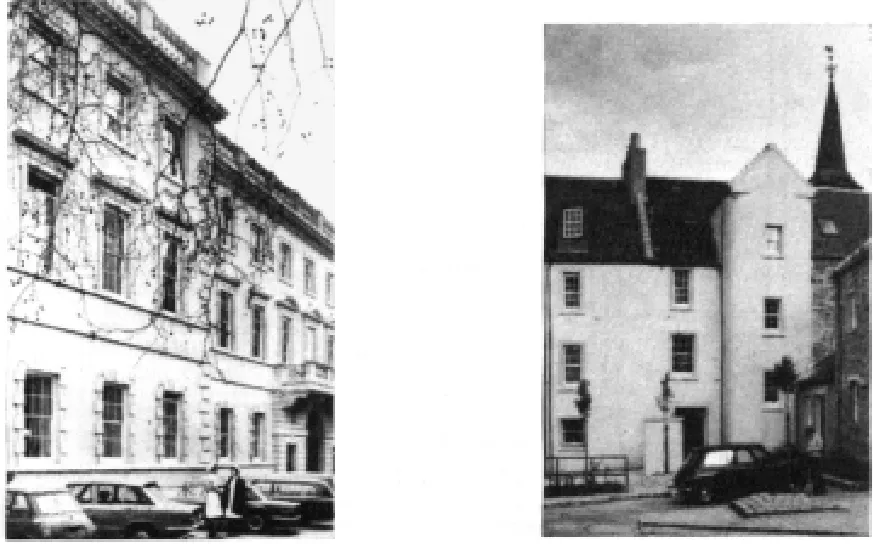
The builder in this instance will be legally known as the main contractor and so is responsible for all aspects of the job, including scaffolding. Building Regulations approval is usually not necessary for this type of work unless the opening is structurally altered or the areas of openable window are reduced.
Working in occupied premises always involves hidden costs and a percentage is usually added to the estimate to allow for this. The employer’s bedroom cannot be treated as a building site! Removal and protection of furniture, curtains, etc., cleanliness and security are of great importance and the owner of the house will probably be equally concerned about the way in which he and his property are treated as to the quality of the job itself.
Double hung sash windows were traditionally made with a cased frame as shown in Fig. 1 and the weight of the sashes is offset by cast iron weights in the frame. When the new window is constructed, the sashes will probably be of a different weight to the existing, and so new counterbalance weights should be provided. Sash chains should be used where the size and weight of the sash would place too much strain on the cord.
Some of the larger joinery manufacturers sell a range of factory made double hung sash windows and though these are normally of an acceptable standard, their sizes and styles may not match the original windows of a house. It is normal practice today for these sashes to be operated by a system of spiral springs instead of cords, pulleys and weights. Speed of production and fewer materials mean that costs are subsequently reduced. This type of construction relies upon friction holding the sash in place and although it is effective, the appearance of the frame is altered considerably; see Fig. 2.
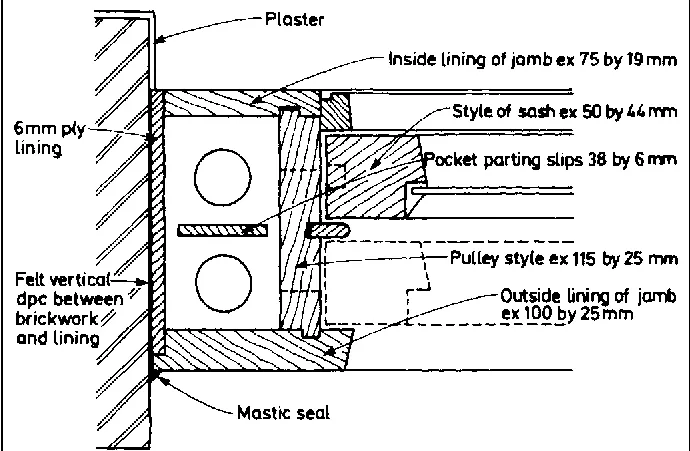
Fig. 1. Sectional plan showing the traditional method of balancing the sashes with weights—cased frame
The construction, design and quality of double hung sash windows is defined in the current British Standard. The small builder is unlikely to have the resources to produce the window himself and there are many competent joinery workshops around that specialise in the faithful reproduction of all types of windows. Redwood is the most commonly used timber for the construction of windows today, although if the builder has priced for an exact duplicate the existing type of wood should be determined. Oak, teak and pine were also used extensively in previous years and the price could vary considerably. The sill, however, should always be constructed of a more durable wood like oak.
After scaffold is erected and preparations are made to protect the houseowner’s belongings, plastering should be hacked off internally and rendering to the external reveals removed to allow the old window to be taken out. If the stone sill is damaged then this too should be carefully replaced.
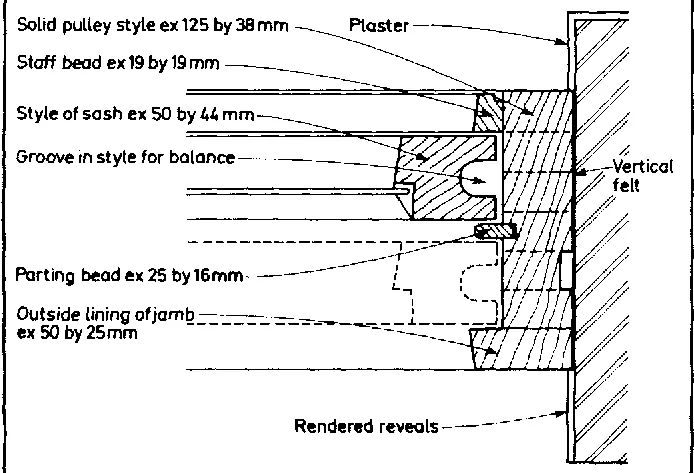
Fig. 2. Sectional plan showing the spiral springs method of sash control
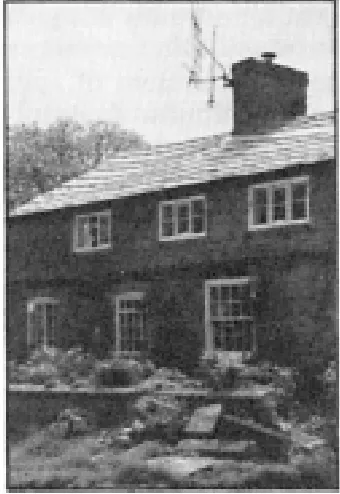
Repairs to brickwork and pointing should be taken into account and although this may be an unforeseeable item at the time of estimating, allowances should nevertheless be made.
Fig. 3 shows the relationship between sills, window and brickwork. Throating and weathering to both the timber and stone/ concrete sills to properly throw off rainwater and avoid dampness are necessary if the window is to last for any length of time. You only get what you pay for, and this is especially true of joinery. It is not worth trying to cut corners and use inferior or smaller section timber as the shorter life of the window will only reflect this false economy in the long term. The importance of careful preparation and regular maintenance should be stressed to the client at the time of the installation.
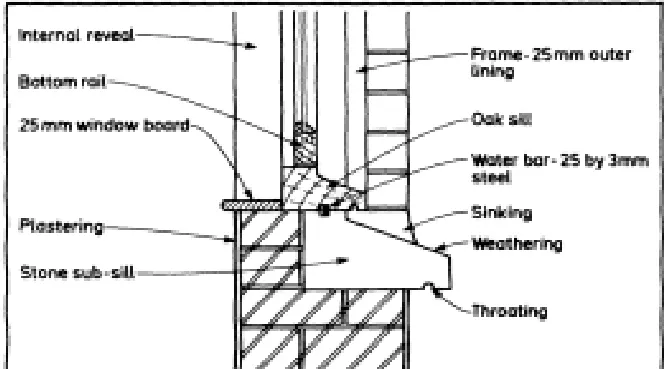
Fig. 3. Section through sill showing relationships between sills, frame and brickwork
The correct size and style of sill may not be readily available and so a reconstituted stone or cast concrete sill will have to be made up. A water bar should be inserted between the top of the stone sill and the underside of the oak sill. This water bar is bedded in mastic in the ...